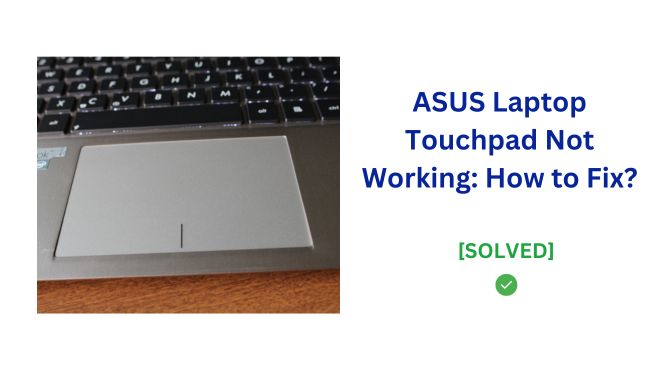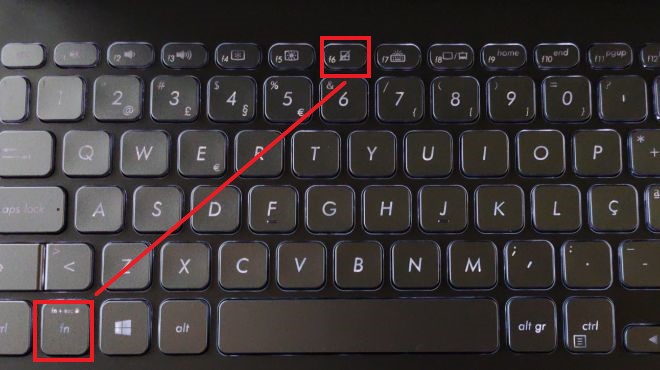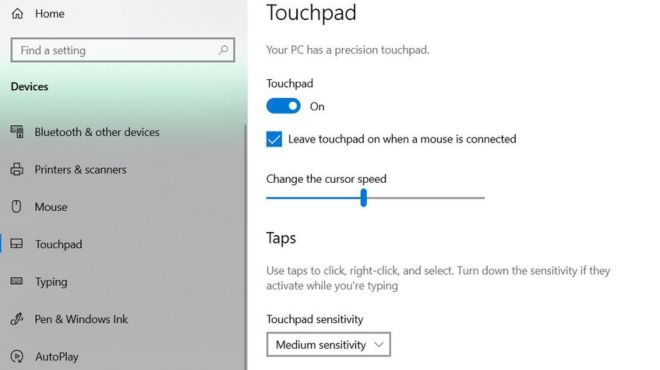Touchpad issues on ASUS laptops such as insensitive, invalid click, software problems and not working are fairly common and there are steps you can take to troubleshoot the problem.
Most of the times Your ASUS laptop’s touchpad is not working because your Touchpad hotkey is disabled. In that case, you can simply use function key (hotkey) to enable the the Touchpad. You can use the Fn + F6 hotkey combination to enable the disabled touchpad on many ASUS laptop models like Asus Zenbook. However, there are certain models where the hotkeys to enable/disable touchpad is Fn + F9.

There are a few other likely reasons why your ASUS touchpad may become unresponsive. A quick settings check or driver update often gets things working again. This article will provide step-by-step guides on common fixes to try if your touchpad is not working properly. With some simple troubleshooting, you can typically resolve the issue and have your touchpad gliding smoothly again in minutes.
Check Touchpad Settings
The first step is to check whether your touchpad has been accidentally disabled through a keyboard shortcut or in the system settings.

- Try tapping the Fn + F6 or Fn + F9 key combination. On many ASUS laptops, these toggle the touchpad on and off. Tap the keys a few times to see if that brings your touchpad back to life.
- Open Windows Settings and select Devices (Bluetooth & devices on Windows 11) > Touchpad. Make sure the touchpad toggle is switched on. For Windows 10, go to Mouse & Touchpad settings to confirm the touchpad is enabled.
- When connecting an external mouse, sometimes the default behavior is to disable the touchpad. Be sure to re-enable the touchpad in Windows Settings even while another mouse is attached if you want to keep functionality.

With your touchpad reactivated through the keyboard or system settings, give it another try. Often a simple setting change resolves many unresponsive touchpad issues on ASUS laptops.
Disable and Re-Enable Touchpad in BIOS
If your ASUS touchpad still isn’t working, the next troubleshooting step is to disable and re-enable the touchpad through the system BIOS (Basic Input/Output System). This will reset the hardware-level configuration for your touchpad.
Here is the process:
- Repeatedly tap F2 while booting your laptop to access the BIOS settings screen. For ASUS laptops, F2 is generally the key that opens the BIOS menu on startup.
- Navigate to the “Main” tab, then look for a setting related to the touchpad. It may be called something like “Internal Pointing Device” or “TouchPad Mode”.
- Disable the touchpad setting, select Save and Exit, then confirm the change. When your laptop restarts, go back to the BIOS to re-enable the touchpad hardware.
- Boot back into Windows and test if the touchpad responds now. Disabling and reactivating the device through the hardware BIOS resets the low-level touchpad functionality.
Resetting your ASUS touchpad drivers through a BIOS power cycle often resolves stubborn unresponsive issues, so this should provide relief in many cases. Give it a shot before moving to the next steps!
Uninstall and Reinstall Drivers
If your touchpad still misbehaves after a BIOS reset, the next approach is to fully uninstall the drivers and allow fresh reinstallation. This will clear any corrupt driver files causing problems.
Follow these steps in Windows:
- Type “Device Manager” in the taskbar search box and open the app. Locate your laptop touchpad device under “Mice and other pointing devices”.
- Right click on the touchpad listing and select Uninstall device > Uninstall. Confirm any prompts to fully remove the touchpad drivers.
- Reboot your ASUS laptop and the drivers will automatically reinstall through Plug-n-Play.
Alternatively, instead of rebooting, you can right-click the top level of Device Manager and select “Scan for hardware changes” after uninstalling. This will force a check for missing drivers and initiate the driver reinstallation process without a full reboot.
With fresh copies of the drivers now loaded, try using the touchpad again normally in your applications. The uninstall and reinstall process often resolves software driver issues causing the touchpad to stop working properly in Windows.
Run Hardware Troubleshooter
If your ASUS touchpad problems persist after driver reinstalls, there may be a hardware defect causing the issues. To help diagnose, run the built-in Windows Hardware Troubleshooter.
- Go to Settings > Update & Security > Troubleshoot > Hardware and Devices.
- Under “Input devices” select the “Run the troubleshooter” button next to Touchpad.
- The tool will now perform automated checks of touchpad hardware and drivers to spot issues. It may detect and flag faulty hardware that requires service or replacement.
Alternatively, you can open up Hardware and Device Troubleshooter with a command. Go to “Run” by pressing Windows + R keys and given the command “msdt.exe -id DeviceDiagnostic” and execute.
While not a fix, the Hardware Troubleshooter provides validation if touchpad failure stems from a deeper device problem rather than software or configuration. Keep its report handy if you need to arrange a repair or return for touchpad replacement due to unrecoverable hardware failure uncovered during diagnostic checks.
Conclusion
I hope this overview gives you a helpful starting point to revive an unresponsive ASUS laptop touchpad. Here’s a quick summary of troubleshooting steps:
- Check keyboard shortcuts and Windows Settings to enable the touchpad
- Disable and reactivate the touchpad through the BIOS
- Uninstall and reinstall the latest touchpad drivers
- Run Hardware Troubleshooter to test for device failures
Following this sequence of software settings, driver, and hardware checks will solve most non-working touchpad issues. Don’t hesitate to work through each solution if your touchpad continues misbehaving. Just stay calm and methodically try every fix. With some guided troubleshooting, you’ll likely have the touchpad gliding smoothly and responsively again in no time.
